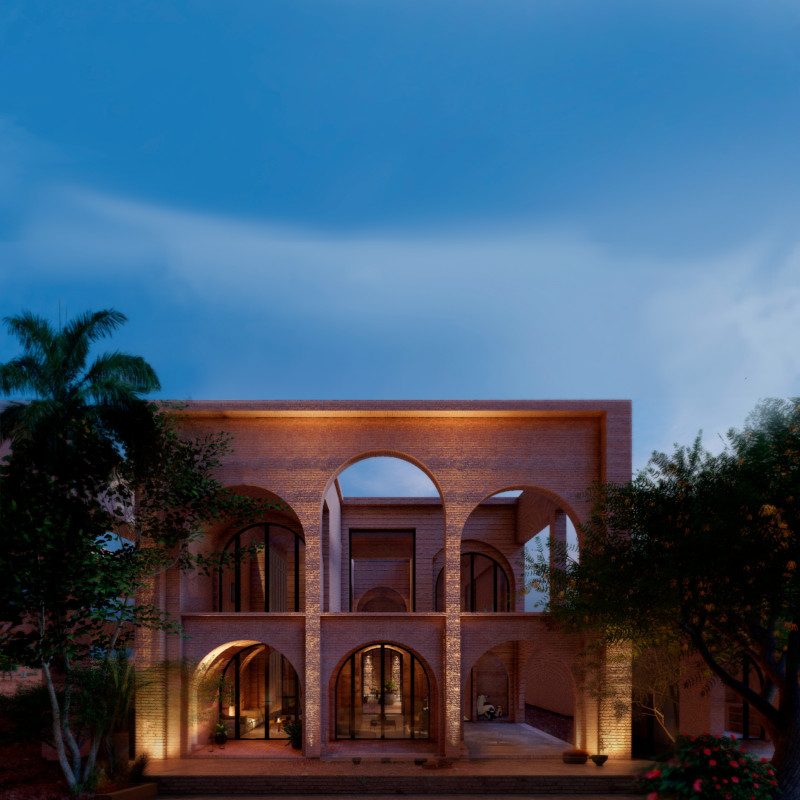5 key facts about this project
At its core, the project represents a harmonious blend of form and function. The design has been carefully calibrated to address the various activities that will occur within its walls, ensuring that each space is utilized to its maximum potential. This attention to detail not only enhances the user experience but also creates an inviting atmosphere that encourages interaction among occupants.
One of the most significant features of the project is its use of natural materials, including sustainably sourced timber, stone, and glass. These materials have been selected not only for their durability and functionality but also for their ability to connect the building with its natural surroundings. The façade showcases a dynamic interplay between solid and transparent elements, allowing natural light to permeate the interior spaces, thereby enhancing the overall ambiance.
The architectural design incorporates striking geometric shapes and forms that provide visual interest while ensuring structural integrity. The roofline features angular planes that create a distinctive silhouette against the skyline, establishing a strong identity for the building. In addition, outdoor spaces, including terraces and green areas, have been included to foster a sense of community and promote outdoor activities.
Interior spaces have been meticulously planned to enhance workflow and communication. Open layouts are complemented by strategically placed private areas to accommodate quiet work, reflection, or intimate gatherings. This duality encourages adaptability, allowing the facility to host a variety of events—from workshops to community meetings—while maintaining an uninterrupted flow throughout the space.
Sustainability is a paramount concern reflected in various architectural ideas present in the project. The design incorporates passive heating and cooling strategies, along with energy-efficient systems that significantly reduce the building's carbon footprint. Rainwater harvesting systems and solar panels are integrated into the design, showcasing a commitment to reducing reliance on non-renewable resources and promoting the responsible use of energy.
The project's unique approach to landscape architecture is equally noteworthy. By incorporating native planting schemes and permeable paving, the site has been designed to function within its local ecosystem, enhancing biodiversity while addressing rainwater management. Such considerations not only enrich the site visually but also ensure greater environmental resilience.
In summary, this architectural project stands as a testament to thoughtful design that prioritizes community engagement, sustainability, and contextual harmony. The careful consideration of materials, spatial organization, and ecological impact results in a facility that is not only practical but also visually appealing. Visitors are encouraged to explore the project presentation further to gain deeper insights into the architectural plans, sections, designs, and ideas that shape this remarkable space. Such details provide a comprehensive understanding of the nuances that make this project a noteworthy addition to the architectural landscape.


























